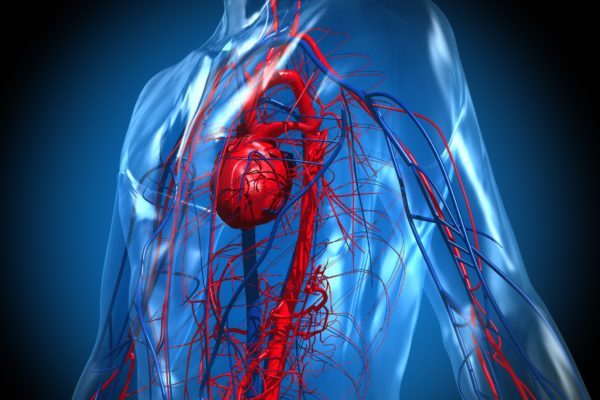Clinical picture
Myelofibrosis (MF) is a rare disease that is characterised by the formation of too much connective tissue (fibrosis) in the bone marrow (myelum). This leads to a decreased formation of all types of blood cells. The increase in connective tissue is the result of uncontrolled growth (proliferation) of megakaryocytes. These megakaryocytes are the progenitor cells of platelets (platelets).
In the initial phase of myelofibrosis, the number of platelets and white blood cells in the blood are strongly increased. At this moment, there is no fibrosis present in the bone marrow. This initial phase is called prefibrotic myelofibrosis. Subsequently, the megakaryocytes stimulate cells called fibroblasts in the bone marrow to produce connective tissue. As the connective tissue in the bone marrow increases, the amount of blood-forming cells decreases rapidly resulting in shortage of normal blood cells.
In the first instance, mainly immature and deformed red blood cells are found the blood. In a later stage, a shortage of normal white blood cells and platelets will also develop. As the amount of connective tissue increases within the bone marrow, other blood cell producing organs, such as the liver and spleen, attempt to compensate for the decrease in production in the bone marrow. This results in the enlargement of the liver (hepatomegaly) and spleen (splenomegaly).
How many people suffer from MF?
Myelofibrosis is a rare disease with approximately 0,1-1 cases among every 100,000 Belgian citizens. MF-patients are mainly between the age of 60-75. The disease is more common in men than in women.
When myelofibrosis develops without an underlying cause, it is called primary or chronic idiopathic (of unknown origin) myelofibrosis (CIMF). When it arises from other blood disorders, it is called secondary myelofibrosis. For example, it may also occur as a results of polycythaemia vera, thrombocythaemia, leukaemia, lymphoma, multiple myeloma and tuberculosis.
Symptoms
Myelofibrosis can progress very slowly and can be present in patients for many years without them noticing. However, symptoms may occur in the initial phase as a result of an excess of platelets. These platelets have a great adhesive power, and in a setting of overproduction, can clot faster, compared to a healthy individual. This may lead to circulatory disturbances in the small blood vessels, resulting in:
- Tingling, pain or discoloration (cyanosis) in the hands, fingers, feet or toes.
- Eye-sight problems, like observing flashes of light and spots.
- Thrombosis, for example, deep vein thrombosis, pulmonary embolism, a heart attack or a stroke.
As the disease progresses, normal blood production in the bone marrow is increasingly disturbed by the advancement of fibrosis. This may cause the following symptoms:
- Anaemia, persistent fatigue, dizziness, paleness or shortness of breath
- Frequent or recurrent infections
- Impaired wound healing
- Increased risk of haemorrhages, including nosebleeds, bruises and more severe menstrual periods
- Itching
- Weight loss
- Fever and sweating at night
- Gout
- Kidney stones
Because both the liver and spleen try to compensate for the production of blood cells, they may become enlarged. Therefore, patients may experience the feeling of having a full stomach or abdominal pain.
Cause
In approximately half of myelofibrosis patients there is a mutation present in the genetic material of the stem cells. In most cases, this is a mutation in the JAK2-gene resulting in the uncontrolled division of stem cells in the bone marrow, creating a surplus of blood cells. In patients who do not have the JAK2 mutation, other mutations are often the cause of the uncontrolled division of stem cells, such as mutations in the CALR or MPL genes. The reason for the occurrence of these mutations in these genes remains unknown.
Diagnosis
To be able to diagnose myelofibrosis, the following tests could be performed:
- Structured medical history, taking into account the signs and symptoms of the patient.
- Physical examination
- Blood tests for, among other things, deformed and unripe red blood cells
- Bone marrow biopsy: to investigate the megakaryocytes and platelets. This is sometimes difficult to perform because the bone marrow cells are stuck in the increased connective tissue (‘dry tap’).
- Radiological examination, ultrasound or scan of the abdominal cavity (liver and spleen size).
- Cytogenetic research for classification and treatment: the JAK2 gene mutation is present in approximately 50% of MF patients.
Treatment
n the early stages of the disease, generally, no treatment is required. However, regular check-ups are desirable or aspirin can be prescribed. An increase in symptoms can be the reason to start treatment and may consist of:
- Cytoreduction (cell killing) with JAK2 inhibitors (ruxolitinib, interferon). In the beginning of the disease, if the leukocytes and platelets are still too high.
- Busulfan or melphalan: when cytoreductive treatment with JAK2 inhibitors gives little response.
- Blood transfusion: when complaints occur due to anaemia. Platelets can also be administered if the levels are too low and haemorrhages occurs.
- Spleen removal or spleen irradiation.
- Stem cell transplantation. Myelofibrosis can only be cured with an allogeneic stem cell transplant from a donor.
Furthermore, targeted therapy for myelofibrosis with telomerase and JAK2 inhibitors, as well as immunotherapy and antifibrotic agents is an area of active research.






